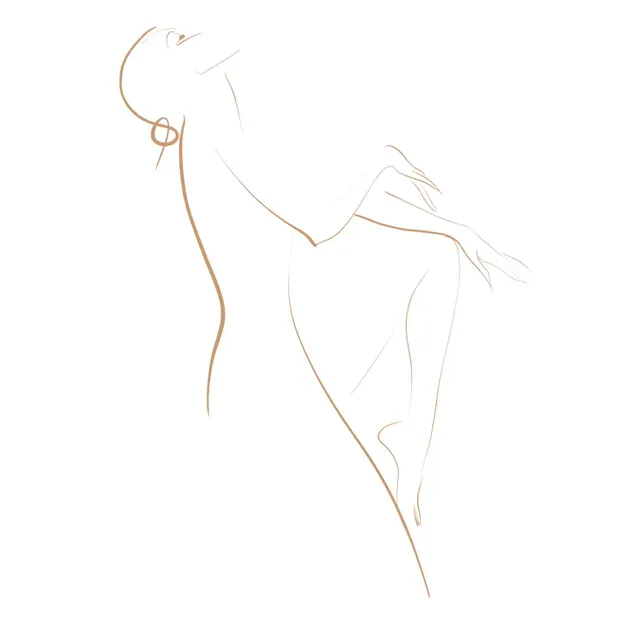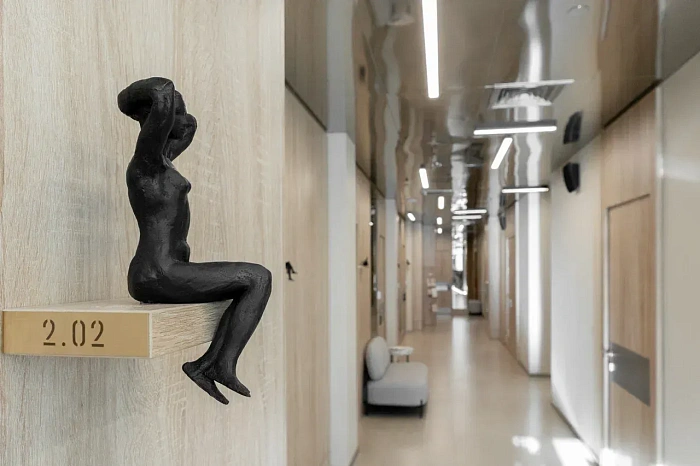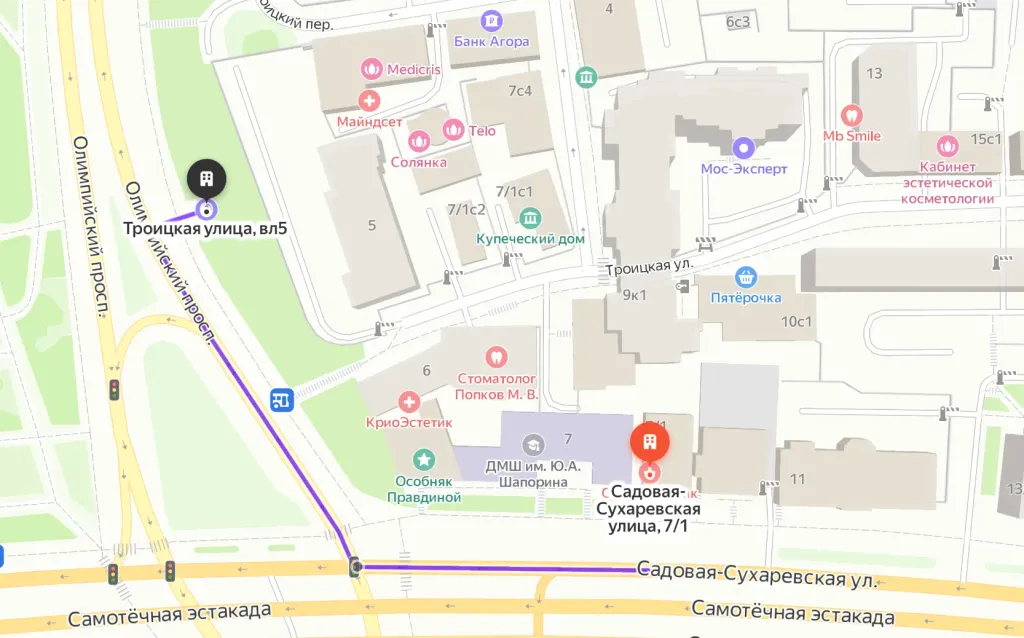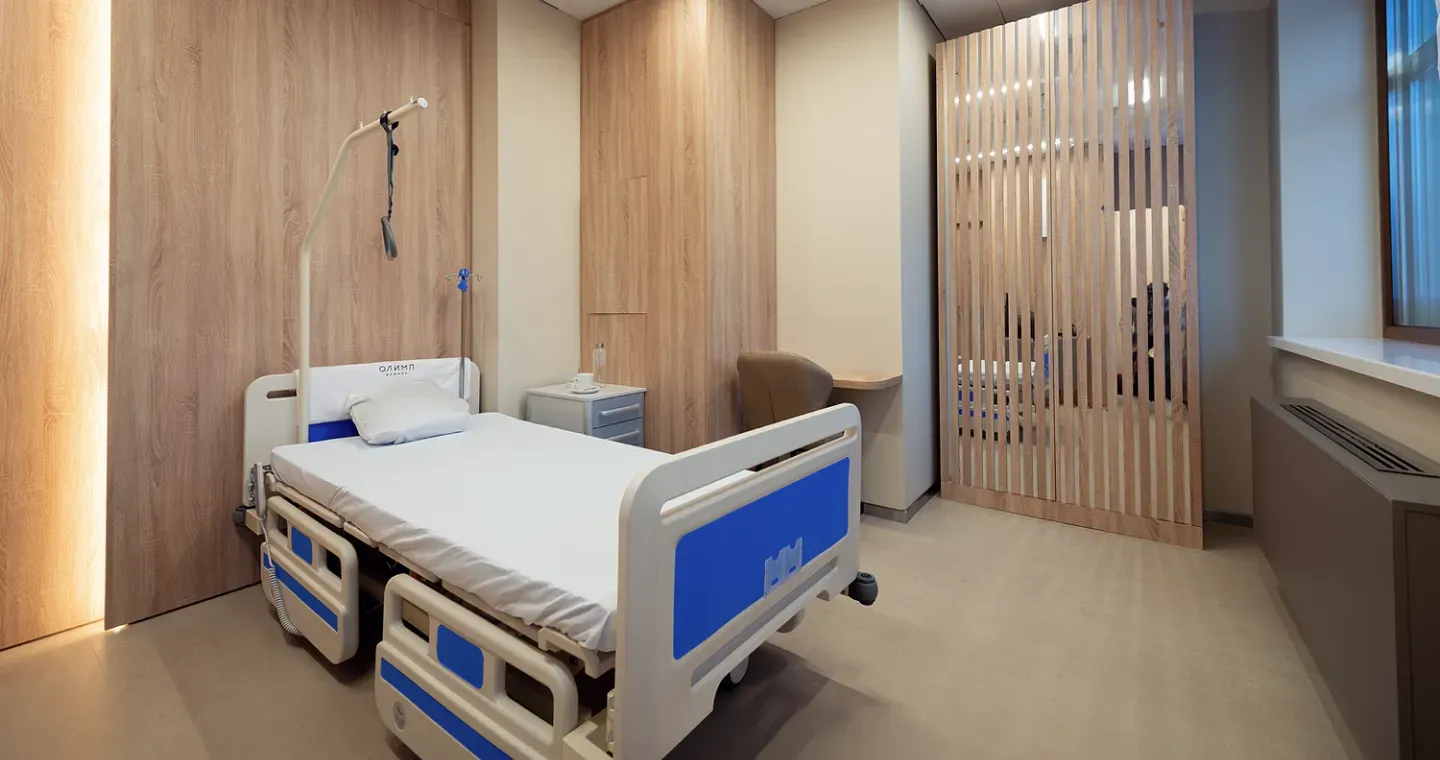Treatment of uterine prolapse and vaginal walls
Treatment helps to return the pelvic organs to their normal anatomical position and eliminate unpleasant symptoms.

Prolapse of the uterus and vaginal walls is a condition in which the muscles and ligaments of the pelvic floor weaken and cannot effectively support the pelvic organs. This can cause the uterus and vaginal walls to move downwards, causing a feeling of pressure in the lower abdomen.
Prolapse is a gradual process that can last for years. Often, women do not notice the problem in the early stages or attribute the symptoms to "age-related changes." According to statistics, every third woman faces prolapse to one degree or another, especially after menopause or multiple births, but there are many solutions to cope with this problem. Timely access to a doctor can significantly facilitate the treatment process. The sooner you start acting, the better the results will be.
Before treatment of uterine prolapse and vaginal walls, it is necessary to: Consult a gynecologist Perform general blood and urine tests Perform an ultrasound examination (ultrasound) of the pelvic organs
Conservative treatment can be effective in the initial stages of the disease. Kegel exercises help strengthen the pelvic floor muscles. Sometimes the use of a gynecological pessary is prescribed — a device that is inserted into the vagina and helps to maintain its walls, temporarily eliminating the symptoms of prolapse. At later stages, operations are performed to strengthen the pelvic floor and restore the normal position of the uterus and vagina. The choice of method depends on the degree of omission. For example, in milder cases, surgery is performed to strengthen the vaginal walls and pelvic floor muscles using the patient's own tissues, which reduces the risk of complications (for example, anterior colporaphy or colpoperineolevatoroplasty). In more complex cases, operations using synthetic materials are used to reliably strengthen ligaments and muscles, which minimizes the likelihood of repeated organ prolapse (for example, sacrocolpopexy or vaginal extraperitoneal colpopexy).
For the treatment of uterine prolapse and vaginal walls are used: Surgical instruments (scalpels, forceps) Mesh implants (if necessary) Laparoscopic equipment
After surgery, it is very important to follow all the doctor's recommendations in order to prevent repeated organ prolapse. During the first two months, physical activity should be avoided: do not lift weights, do not run, do not jump and do not perform abdominal exercises. Sexual intercourse should be excluded for 6-8 weeks so that the tissues can heal completely. The doctor may also prescribe a course of physiotherapy to improve blood circulation and accelerate tissue healing.
Benefits
Individual approach
The choice of treatment method is based on the personal needs and health status of the patient.
Safety
Minimal risk of complications and side effects.
High efficiency
Modern surgical techniques make it possible to achieve lasting results by eliminating symptoms and returning organs to their normal position.
Improving the quality of life
Treatment is aimed at restoring the normal functions of the pelvic organs, which contributes to a significant improvement in overall well-being.
In what cases is it necessary to see a doctor?
Feeling of heaviness
Patients may feel discomfort or a feeling of heaviness in the pelvic or vaginal area.
Pelvic or back pain
Pain in the pelvic area or lower back may occur due to drooping and increase with physical exertion.
Problems with urination
Prolapse of the uterus and vaginal walls can cause problems with urination, such as the inability to completely empty the bladder or frequent urination.
Consultation before treatment of uterine prolapse and vaginal walls
Before treatment, a medical examination is performed, including ultrasound of the pelvic organs, and, if necessary, other diagnostic procedures. Based on the results obtained, the doctor determines the degree of omission and chooses the most appropriate treatment method.

Treatment of uterine prolapse and vaginal walls
In the initial stages of the disease, conservative treatment can be effective — physical education to strengthen the pelvic floor muscles. At later stages, operations are performed to strengthen the pelvic floor and restore the normal position of the uterus and vagina. Surgical methods include colpoplasty (suturing of the vaginal walls), sacrocolpopexy (fixation of the uterus to the sacrum using synthetic materials) and other operations.

Recommendations after treatment of uterine prolapse and vaginal walls
After surgery, it is important to follow all the doctor's recommendations, including taking prescribed medications, limiting physical activity and regular examinations to monitor your health.

Frequently Asked Questions
How long does the effect last after treatment?
How do I know that I may have a prolapse of the uterus or vaginal walls?
Is it possible to prevent the prolapse of the uterus and vaginal walls?
What are the symptoms that indicate the need for treatment?
Is surgical treatment always necessary?
How long does rehabilitation take after surgery for vaginal wall prolapse?
Didn't find an answer to your question?
You can describe your problem in detail and ask a question to the doctor. He will answer you and help you find a solution
Specialists
Find a SpecialistDoctor of the highest category, surgical obstetrician-gynaecologist specialising in anti-age and bioregenerative medicine, oncologist
Candidate of Medical Sciences. Gynecologist-obstetrician. Head of the gynecology department.
Indications and contraindications
Indications
Prolapse of the uterus and vaginal walls
Treatment is recommended for physical discomfort, pelvic pain, urinary disorders and sexual dysfunction.
Ineffectiveness of conservative treatment
If physical therapy, exercises to strengthen the pelvic floor muscles and the use of a pessary do not bring the desired result.
A significant decrease in the quality of life
For symptoms that interfere with normal life activities, including sexual relations, physical activity and hygiene.
The desire to preserve reproductive functions
If a woman is planning a pregnancy in the future, treatment methods are chosen that maximize the functionality of the reproductive system.
Diagnostic methods
Ultrasound examination
Ultrasound of the pelvic organs allows you to determine the degree of prolapse of the uterus and vaginal walls.
Magnetic resonance imaging (MRI)
Magnetic resonance imaging can be performed to study the structures in more detail and assess the degree of omission.
Cystoscopy
A study can be conducted to rule out other problems, such as bladder prolapse.
Expected effect
Elimination of omission symptoms
Reduction of discomfort, pain in the pelvic area, problems with urination.
Restoring the correct anatomy
Correction of the position of the uterus and vagina to return them to their normal position.
Improvement of sexual function
The patient can return to her usual sex life.
Prevention of relapses
Stabilization of the position of the pelvic organs to prevent repeated omission.
Similar referral activities
Removal of tumors in the intimate area
A procedure aimed at eliminating benign growths such as papillomas, warts, cysts and genital warts.
Reproductive surgery
Surgical treatment and simultaneous accurate diagnosis of female infertility factors: adhesions, endometriosis, congenital malformations of the genital organs, obstruction of the fallopian tubes, intrauterine pathology (septum and synechia), polycystic ovary syndrome.
Colposcopy procedure
A procedure in which a doctor can use a colposcope to examine the vagina, cervix and vulva, examine the mucous membrane in detail and identify abnormal changes that may be a sign of diseases.
Cervical plastic surgery
Cervical plastic surgery (tracheloplasty) is a surgical restoration of the anatomical structure and function of the cervix, which helps to maintain the health of the reproductive system.
Treatment of vulvar diseases
Vulvar diseases, including chronic fissures, sclerotrophic lichen and other dermatological conditions. We offer modern and effective treatment methods aimed at reducing symptoms and restoring the normal condition of the vulva skin.
Correction of menopause problems
The onset of menopause is often accompanied by a number of physical and mental manifestations unpleasant for a woman. The gynecologist will choose therapy, which can relieve or completely eliminate the symptoms.
News & Media
All news and mediaThe III All-Russian Progress Conference "Aesthetic Gynecology and Perineology: balance of beauty and functionality" was held in Moscow
The event lasted from 24 to 26 May, and the theme was Aesthetic gynecology and perineology: the balance of beauty and functionality.
What to do with urinary incontinence after childbirth?
Find answers to your questions and feel more confident.
What is important for every woman to know about the cervix?
Everything you need to know about the cervix is now collected in one article on the website of the "Daughter-mother".
Why should your mother visit a gynecologist?
We all understand why girls should visit a gynecologist. This specialist will help solve various problems related to women's health — from pregnancy management to the prevention of sexually transmitted diseases. However, over time, when women get out of reproductive age, they begin to contact a gynecologist less and less often, mistakenly believing that they no longer need his help. But a gynecologist is not only about reproductive health, he can help in solving many other issues related to the female body. So what questions can your mother ask a gynecologist about?
How to strengthen the pelvic floor muscles?
Intimate problems are often hushed up, it is awkward to talk about them even with a doctor. However, if the issue concerns the health of the pelvic floor, it is better not to waste time and immediately consult a doctor. After all, problems with this area can lead to very unpleasant consequences.
Uterine bleeding — is it worth sounding the alarm?
Abnormal uterine bleeding is when the bleeding goes beyond the normal menstrual cycle. The discharge may be more abundant or last longer. The "normal" menstrual cycle is different for everyone. But menstruation shouldn't be a problem for you.: a serious condition that prevents you from engaging in any activity, forces you to skip work or study. In the article we will tell you how to distinguish abnormal uterine bleeding.
Stress-free menopause: how hormone therapy helps women
With age, women experience a natural decrease in reproductive function, known as menopause. This process takes a long time and is accompanied by changes in the physical and emotional state, hormonal restructuring and complete cessation of menstruation. On average, menopause (the so-called last menstruation in a woman's life) occurs at the age of 45-55 years, but its precursors may appear earlier, and the process of "restructuring" the body can last for several years. A decrease in the level of female sex hormones leads to unpleasant symptoms that not only worsen the quality of life, but can also contribute to the development of serious diseases. Although menopause is not a disease and does not require treatment, there are methods to improve well-being and prevent complications. One of these methods is menopausal hormone therapy (MGT). The decision on the need and time of MGT is made by a gynecologist. To understand whether such therapy is necessary for all women, it is important to understand the nature and characteristics of menopause.
How to reach
How to get
From the Belorusskaya metro station of the Zamoskvoretskaya line - exit 4 After exiting the subway, walk through the pedestrian tunnel and climb the stairs. Move towards the railway tracks, go down the stairs immediately after them and walk along the house, then turn right onto 1st Yamskoye Pole Street. At the turn to 3rd Yamsky Pole Street, cross the road at the pedestrian crossing and continue along 1st Yamsky Field Street, after a few buildings on the left you will see Olympus Clinic MARS.
Travel time
9 minutes
Landmark
Olympus Clinic MARS sign
How to get
From the Belorusskaya metro station of the Ring line - exit 2. After exiting the subway, turn left and walk to the pedestrian crossing. Cross the road through two pedestrian crossings and move along the Tverskoy overpass. Go down the stairs immediately after the railway tracks, walk along the house, then turn right onto 1st Yamskoye Pole Street. At the turn to 3rd Yamsky Pole Street, cross the road at the pedestrian crossing and continue along 1st Yamsky Field Street, after a few buildings on the left you will see Olympus Clinic MARS
Travel time
11 minutes
Landmark
Olympus Clinic MARS sign
From the metro station "Tsvetnoy Bulvar"
1 exit to the city, then left to the Garden Ring, at the crossing to the right, crossing the boulevard, one more crossing and at the traffic light to the left. The Olymp Clinic building is located overlooking the Garden Ring to the right of the crossing. Travel time is approximately 9 minutes. Landmark - sign Olymp Clini
From the metro station "Sukharevskaya"
Exit 3 from the metro and 640 meters straight ahead, the clinic will be on the right. Landmark - sign Olymp Clinic
Parking lot map
Exit 3 from the metro and 640 meters straight ahead, the clinic will be on the right. Landmark - sign Olymp Clinic

From Sokol metro station
The last car from the center: follow the signs for Exit 5. From the glass doors to the right and go to the end of the passage. Exit to the city by the steps to the left. After exiting the crossing to the street, go straight along Leningradsky Prospekt to the intersection with Chapaevsky Lane. Next, turn right (onto Chapaevsky Lane) and walk to the Triumph Palace residential complex. Entrance to the territory: through checkpoint No. 1, opposite the Vkusville store, you will need to present your passport. After passing through the checkpoint, go up the stairs to the fountain, opposite it you will see our clinic.
Travel time
10-12 minutes
From the Airport metro station
The first car from the center: follow the Exit 2-3 signs. Turn left out of the glass doors and walk to the end of the passage. After exiting the crossing to the street, go straight along Leningradsky Prospekt to the intersection with Chapaevsky Lane. Next, turn left (onto Chapaevsky Lane) and walk to the Triumph Palace residential complex. Entrance to the territory: through checkpoint No. 1, opposite the Vkusville store, you will need to present your passport. After passing through the checkpoint, go up the stairs to the fountain, opposite it you will see our clinic.
Travel time
12-15 minutes
How to get
Entry to the territory is prohibited, but there are free city parking lots around the Triumph Palace residential complex, where you can easily find a place for your car. Free parking area:







